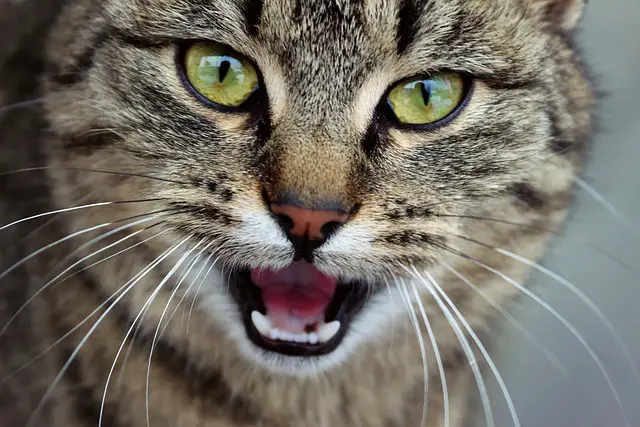Have you ever wondered what your cat says when they leave the room or turns away from you? Cats have a wide range of body language and vocalizations to communicate their needs and emotions. Understanding your cat’s body language can help you better understand their behavior, so let’s explore how cats say, “leave me alone.”
How do cats say leave me alone?
When cats want to be left alone, they may take on a few different behaviors that humans often interpret as signs of distaste.
A cat’s body language is one obvious way they can convey the message to leave them alone; if a cat becomes stiff, flattens their ears, or holds their tail low, it usually means they are not feeling comfortable and would prefer to be left undisturbed.
They may also vocalize their request for space by yowling, growling, or hissing at anyone who tries to get too close and interacts with them when they’re not in the mood.
The surest way cats communicate that they want someone to go away is through avoidance – if you notice that your cat tries to move away from you, a bath, or an uncomfortable situation, it might be best to give them the space they seek.
Signs Your Cat Wants Alone Time
1. One of the most common ways cats express their desire for some alone time is by leaving the area.
Whenever a cat feels overwhelmed, it often searches for a quiet place to relax and escape.
If your cat does this, give them some space until they’re ready to come back out on their terms. This helps them feel safe and secure in their home environment.
2. Another sign that your cat wants to be left alone is if they start making low growls or hisses.
This type of vocalization usually happens when your cat feels threatened or anxious in some way, so it’s important to respect their boundaries and give them the space they need to calm down.
If your cat continues to make these noises after you’ve given them some space, it may be best to take them to a veterinarian for further evaluation, as this could indicate a deeper problem.
3. It’s also important to pay attention to your cat’s ears when figuring out whether they want some time alone.
Cats typically pin back their ears to indicate that something is making them uncomfortable; if you see this happening, it’s best to give them some space until they are ready for more attention from you again.
Flattened fur along the spine or tail can indicate fear or aggression—another sign that it’s time for everyone in the room (including yourself) to back up and give your kitty plenty of breathing room.
Conclusion:
Cats have many ways of telling us humans when it’s time for us all to take a step back and leave them alone so that they can feel safe in their territory again. Things like leaving the area, hissing/growling, flattening fur along the spine/tail, and pinning back ears are all signs that your kitty wants some “me” time.
Understanding why cats act in specific ways can be incredibly helpful in providing the best care possible for our feline friends. As always, though, if something seems off with your pet, please get in touch with a veterinarian right away.
[su_box title=”Affiliate Disclosure”]This website is supported by its readers. Please assume that all links are affiliate links. If you make a purchase from one of the links we will make a commission from Amazon. Thank you.[/su_box]




